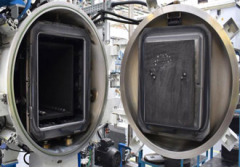Cutting costs, while saving the planet

The main driver of business sustainability goals is to make an impact on the wider world. Another benefit that is often overlooked is the economic value of implementing sustainable actions. Can businesses save money, while helping to protect the planet? Here, Sachin Pimpalnerkar, Global Segment Manager for Renewable Energy at Sandvik, explains how Sandvik Machining Solutions (SMS) has optimised two crucial toolmaking technologies to achieve just that.
Almost everything made of metal is machined with an insert. The insert has to withstand extreme heat and force, so is made of some of the hardest materials in the world. Typically, an insert is made using 80% tungsten carbide, renowned for its durability, and a metal matrix that binds the carbide grains together, where cobalt is the most common.
Tough components created to withstand some of the most intense working environments require manufacturing processes that are equally strenuous.
Sintering
One of the most intense steps in tool insert manufacturing is the sintering process. After the carefully selected metal powders are milled and then pressed into shape, the inserts are very fragile. It is at this stage that the inserts are fused, or sintered, into solid pieces.
Inserts can spend up to 13 hours in a sintering oven, at a temperature of approximately 1,500°C, where they are sintered into an extremely tough cemented carbide product - almost as hard as diamond.
Sintering is not a quick process - but time is money. Keeping powerful furnaces in operation for many hours at a time uses up immense amounts of energy, but cutting corners and producing fragile inserts would be even more wasteful. If a reduction in energy consumption is to be made possible, it would require a reduction in cycle times without compromising product quality.
So, that’s exactly what Sandvik did. Teams at Dormer Pramet, a global cutting tool manufacturer and part of the Sandvik Group, have successfully reduced the cycle time of their sintering process by almost 100 minutes. To achieve this reduction, Dormer Pramet engineers worked in close collaboration with research and development specialists from Sandvik Materials Technology (SMT) in Pune, India to redesign the gas flow passing through the charge of the sintering furnaces.
Dormer Pramet’s facility in Sumperk, Czech Republic, is the first to trial the new sintering process. Shorter sintering cycles also means that the facility can produce more parts while using the name amount of energy.
Coating
When machining ferrous materials such as cast iron or stainless steel, a coated insert is the favoured tool of choice. CVD coating involves placing tools into a chamber, which is pumped with gases at 950-1,100°C. These gases react inside the heated chamber, depositing a thin layer onto each tool that reinforces its strength.
There are two common types of CVD heating. Cold wall CVD heats the contents of the chamber by passing current through the chamber itself, while its walls remain at room temperature. Hot wall CVD heats the chamber using an external power source and radiation from the chamber’s walls heats its contents. Here, engineers were faced with another heating dilemma. High temperatures are key to effective CVD coating, but maintaining them is an energy intensive process.
How do we keep heat inside a building? We insulate it. To prevent heat from escaping CVD coating chambers, Dormer Pramet implemented a similar technique, by adding new insulation onto the furnace’s coating. Trapping heat inside the chamber has shortened the cycle times of CVD reactors, and is estimated to lower emissions by 25 tonnes every year.
Improved insulation also improves deposition conditions, meaning that inserts in the chamber can receive a more even coating to create stronger and more effective tools.
Combined, these two actions are calculated to not only reduce annual emissions by around 40 tonnes, but also save around 230,000 euros every year. Sustainable action will always focus on environmental improvement, but by implementing simple changes, manufacturers may also enjoy the business benefits that process evaluation can bring.
Sandvik’s goal is to reduce its CO2 impact by 50% by the end of 2030. To learn about the rest of the company’s sustainability goals, visit the website.
Similar articles
More from Sandvik Materials Technology
- Innovation to foster a sustainable future 26th May 2021
- How 3D printed motor nodes became a gamechanger in e-bikes 22nd September 2020
- How Sandvik has encouraged steel circularity 3rd September 2020
- How can we sustainably manufacture steel? 17th August 2020












Write a comment
No comments